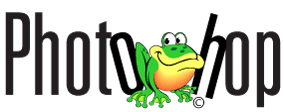Understanding Photo File Formats November 13, 2015 13:29
Understanding Photo File Formats
File Types
Photohop accepts any of the following flattened photo files: TIFF, PSD, JPEG(JPG), as well as RAW.
JPEG/ JPG files are the most common and are perfectly acceptable. However, RAW or uncompressed TIFF files are preferred if you require any extensive retouching or colour enhancement.
TIFF (Tagged Image File Format)
TIFF is a flexible format that can be lossy or non-lossy. The details of the image storage algorithm are included as part of the file. TIFF is used almost exclusively as a non-lossy image storage format that uses no compression at all. Most graphics programs that use TIFF will not compress the data. This absent compression can result in files that are quite large; however the benefit of not compressing the data outweighs the larger file size.
JPEG/JPG (Joint Photographic Experts (Group)
JPEG is optimized for photographs and similar continuous-tone images that contain many colours. It can achieve astounding compression ratios even while maintaining very high image quality. JPEG works by analyzing images and discarding information that the eye is least likely to notice. The degree of compression is adjustable. At moderate compression levels of photographic images, it is very difficult for the eye to discern any difference from the original, even at extreme magnification. Compression factors of more than 20 are often quite acceptable. Better graphics programs such as Paint Shop Pro® and Photoshop®, allow you to view the image quality and file size as a function of the compression level. You can then conveniently choose the balance between quality and file size. If saving a file as a JPEG, we recommend that you use the highest quality settings available.
RAW
RAW files are so named because they have not yet been processed. They contain all of the native data that has been captured by the camera's sensor. The file must first be converted by an RAW Converter before an image can be printed. There are hundreds of different RAW formats; one to several extensions may exist for each camera manufacturer (see the table below for the most popular ones). An RAW file preserves most of the information captured by the camera. This format is ideal for performing retouching and colour enhancement because an RAW file will often have a wider dynamic more workable colour range.
Manufacture's RAW Extensions
| Mfg. | RAW Extension |
|---|---|
| Nikon | NEF |
| Canon | CRW / CR2 |
| Olympus | ORF |
| Pentax | PEF |
| Panasonic | RW2 |
| Sony | ARW, SRF, SR2 |
| Kodak | KDC, DCR, K25 |
| Mamiya | MEF |
| Hasselblad | 3FR |
| Phase One | IIQ |
PSD
PSD is a proprietary format and file extension used by Adobe Photoshop® and is the leading digital image editing application preferred by professionals. The use of Photoshop's layers allows you to build very complex imagery that can easily be modified to achieve the look that you are after.
PNG (Portable Network Graphics)
PNG is a non-lossy storage format designed for transferring images on the Internet, and not for professional-quality print graphics. As a result, PNG does not support non-RGB colour spaces such as CMYK.
GIF (Graphics Interchange Format)
GIF is a good choice for web based graphics, but not for producing quality photo prints. Gif supports up to 8 bits per pixel thus allowing a single image to reference a palette of up to 256 distinct colours. If the image has fewer than 256 colors, GIF can render the image exactly. Thus, GIF is "non-lossy" only for images with 256 colours or less. For a rich, true colour image, GIF may "lose" 99.998% of the colours.
The following table identifies what file type is most suited for reproducing photographic images for either print or the web.
File Format For Printmaking Suitability
| File Format | Output | Ranked Preference |
|---|---|---|
| RAW | Must be converted to a "positive" file format: JPEG or TIFF | 1 |
| TIFF/PSD | Least amount of data loss and most suited for producing photographic prints | 2 |
| JPEG/ JPG | Some loss of data and preferred for producing photographs for both print & web | 3 |
| PNG | Best for web based graphics but not ideal for producing photographic prints | Not Suitable |
| GIF | Less data than PNG and better suited for graphics & web based animation | Not Suitable |
Lossy (Artifacts) vs. Non-Lossy Compression
Data file compression can be divided into two camps: "lossy" and "non-lossy" (lossless).
| Non-Lossy | A "non-lossy" compression algorithm discards no information. It looks for more efficient ways to represent an image while making no compromises in accuracy. |
| Lossy | "Lossy" algorithms accept some degradation in the image to achieve a smaller file size, resulting in unwelcome noise, interpolation, pixelation and other artifacts that can seriously affect the final print. |
